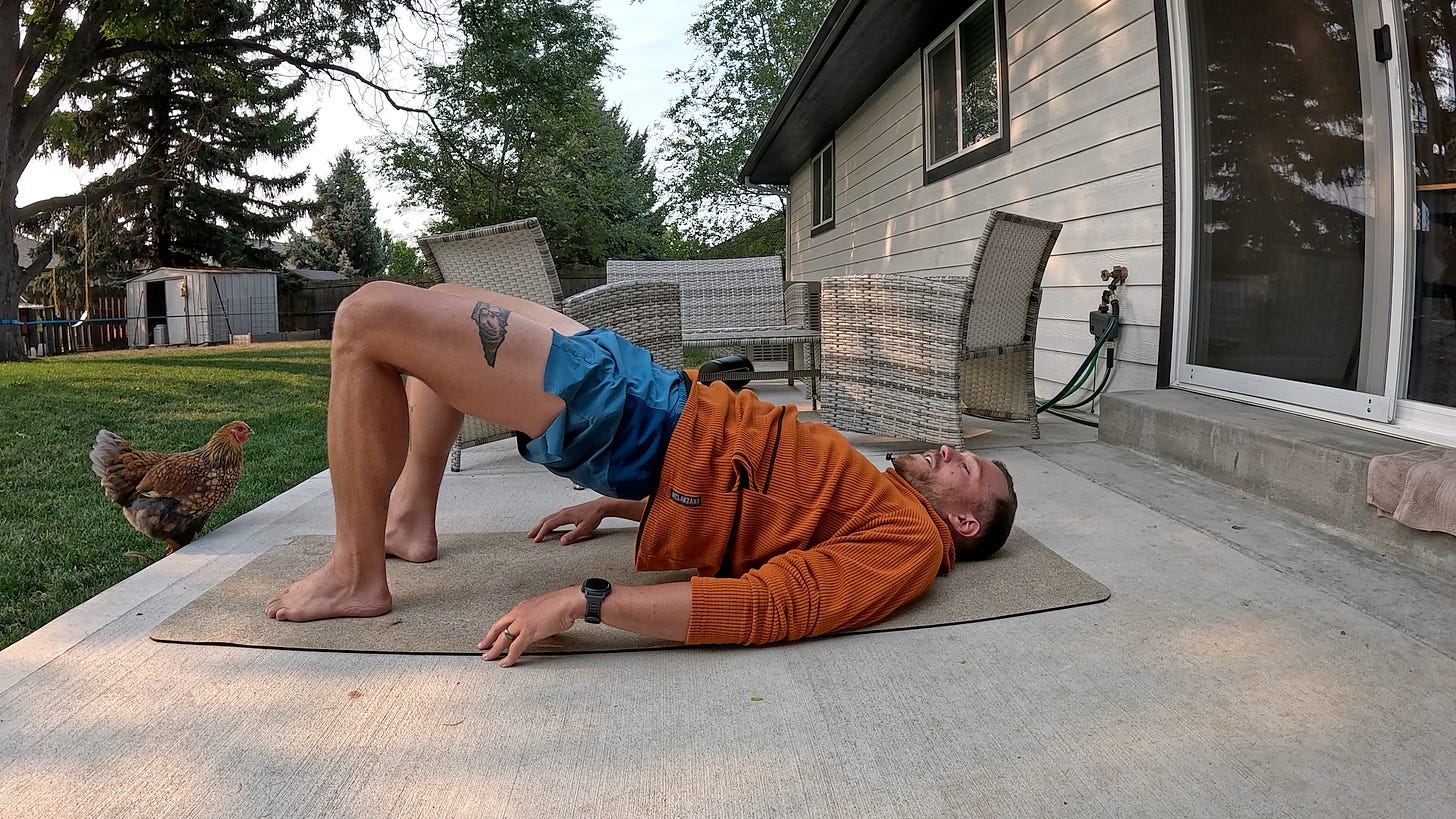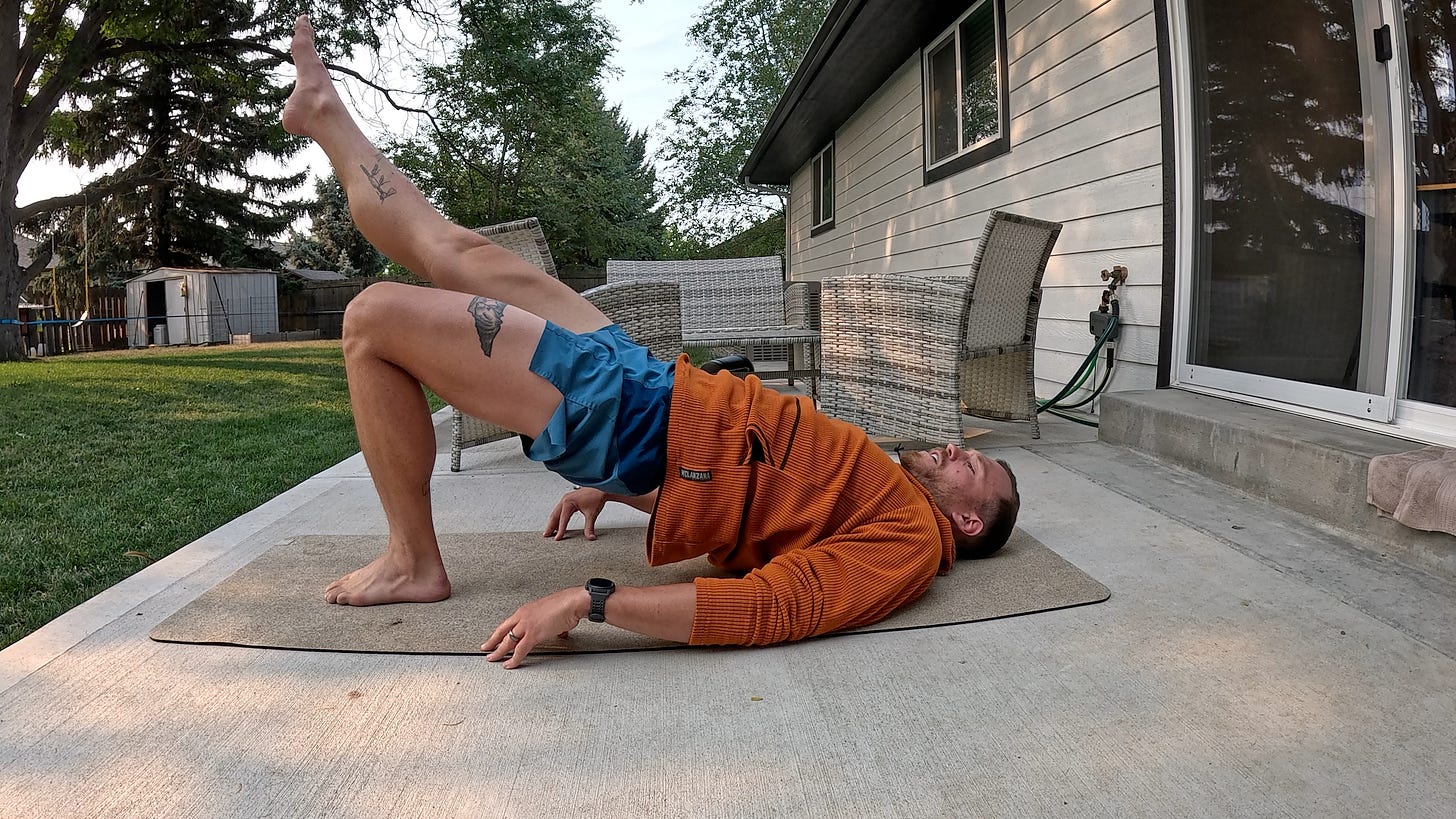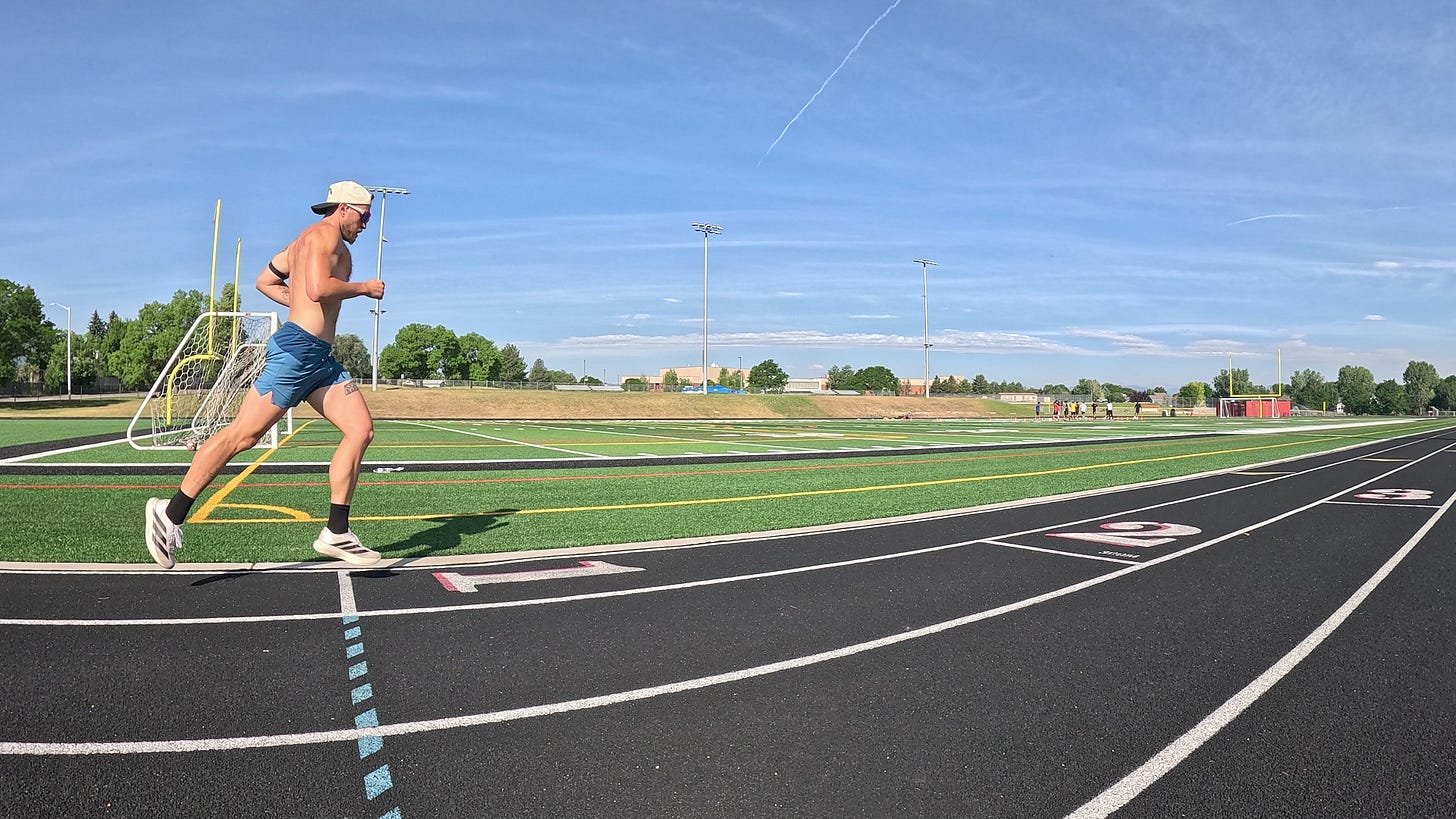A few weeks ago, I went on a run with a new athlete.
Within 10 seconds, I could see it…
No power from the back of his stride.
He was pulling with his hamstrings instead of pushing with his glutes.
Then I remembered a common theme in his last few races:
Extreme cramping in his hamstrings and calves.
Weak or inactive glutes don’t just hurt your running performance…
They also shift your load to hamstrings, calves, and lower back.
That’s a fast track for cramping, poor mechanics, and chronic pain.
So whether you’re training for your next race, chasing longevity, or just want to move better and stay pain-free…
This post will help.
We will break down:
The athlete profile where this shows up the most
A simple 3-step test to check your glute recruitment
The exact protocol I use to build stronger, more powerful glutes for running and everyday life
Let’s dive in.
Older Guys With No Ass
There is a specific athlete profile I see this with all the time:
Athletic guys in their 40s and 50s
Healthy and active, often with successful corporate careers.
But they don’t lift legs and sit at a desk all day.
The result?
Underdeveloped glutes. Overworked hamstrings. Constant tightness and late-race cramping.
How Glutes Help You Run
Your glutes are your biggest, most powerful lower body muscle group.
When they're firing properly, you:
Generate more force
Reduce strain on hamstring and calves
Minimize the risk of cramping during long efforts
But most guys don’t know how to recruit them.
Those imbalances lead to tightness, inefficiency, and injury.
A 3 Step Glute Recruitment Test
The goal of this glute recruitment test is to feel your glutes engage, and introduce a progression of single leg work that brings awareness to balance and stability.
1. Standard Glute Bridge
Goals:
lift hips so quads and core are in a straight line
feel glutes contracted and engaged
2. Single Leg Glute Bridge
Goals:
hold one leg out at full extension without dropping hips
alternate legs without losing balance
3. Mini Band Kickback
Goals:
engage glute to lift and press rear leg back
engage core to maintain overall stability
engage front hip to stabilize plant leg
This is training your muscle groups to work together. And will lead to better form late in races/training.
more power out the back
evenly distributed load
smoother form
faster speed
Glute Strengthening Protocol
Here are 4 exercises I recommend for runners who need to activate, strengthen, and engage their glutes in training.
1. DB Goblet Squat
2x 5–10 reps @ 1 RIR (Reps In Reserve)
Add a 1-second pause at the bottom, then explode up. Drive through the floor. Feel the glutes engage.
2. Eccentric RDLs w/ DBs
2x 5–10 reps @ 1 RIR
Lower with a 3-second tempo, deep stretch, maintain a strong hinge.
Don’t overload these — keep form sharp and tension on the glutes.
3. Dumbbell or Machine Hip Thrust (Squeeze at Top)
2x 5–10 reps @ 1 RIR
Hold the top for 1–2 seconds every rep. Think: tension > weight.
4. Walking Lunges (DBs or KBs)
2x 15 reps per leg
Keep posture tall, weight moderate, and control each step. If you’re wobbly or tight through the hips, go lighter and slower.
Final Thought
Most runners skip strength work. Or they do it wrong.
They chase soreness instead of function.
This protocol is built to rebuild your glutes from the ground up, so you stop cramping, and finally feel your body working with you, not against you.
Don’t wait until mile 10 to realize your glutes weren’t ready.
Start now.
Join The Run Foundations Cohort
If you're ready to dial in your run form, build a stronger foundation, and stay injury-free this fall...
Join the next Run Foundations Cohort.
We’ll combine structured running with smart strength work to help you:
Build real durability
Activate the right muscles
Move better, run smoother, and stay consistent
Starts next week. 1 spot left. Commit now.
Join Run Foundations Cohort HERE.
Onward.
Ryan







